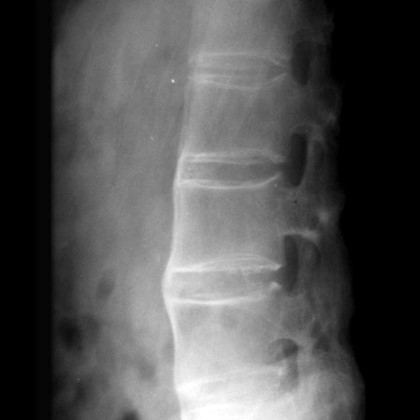The long-term, progressive joint inflammation and stiffening (generally of the back and pelvis) that are the primary symptoms of ankylosing spondylitis classically influence young men. The state will run in families.
Although the primary symptoms are in the joints, ankylosing spondylitis is a connective tissue disorder as well as affects other organs in the body. The illness especially influences the sacroiliac joints that join the back of the pelvis to the bones of the spinal column (vertebrae) . If the back is badly diseased, new bone begins to develop between the vertebrae and eventually fuses them together so the back becomes rigid and immobile.
A form of ankylosing spondylitis is preceded by the skin disorder psoriasis and by inflammatory bowel disease including Crohn’s disease.
What Are The Causes?
The cause of ankylosing spondylitis is unknown, but about 9 out of 10 individuals with the illness have a special material that’s capable of provoking an immune response in the body (antigen), called HLA B27, on the surface of most cells. This antigen is inherited, which helps clarify why anklosing spondylitis runs in families. However, most individuals with HLA B27 don’t develop ankylosing spondylitis so there must be other factors on the job.
A bacterial disease is believed to activate ankylosing spondylitis in those people who are predisposed.
What Are The Symptoms?
The symptoms of ankylosing spondylitis usually appear in late adolescence or early adulthood and grow slowly over a period of months or even years. The primary symptoms include:
- low back pain, which might spread down into the buttocks and thighs
- low back stiffness which will be worse in the morning and improves with exercise
- pain in other joints, like the hips, knees, and shoulders
- pain and tenderness in the heels
- tiredness, weight loss and moderate temperature.
What Are The Complications?
- If left untreated, ankylosing spondylitis can cause the backbone to become distorted, forming a convex curvature called kyphosis that results in a stooped position.
- If the joints between the backbone and the ribs are changed, chest growth is controlled.
- In many people, ankylosing spondylitis causes inflammation or damage to the tissues in places besides the joints, like the eyes.
How Is It Diagnosed?
- Your physician may imagine ankylosing spondylitis from the pattern of your symptoms.
- An X ray will show up signs of fusion in the joints of the pelvis and the back.
- Blood tests will be done to quantify the degree of inflammation and try to find the HIA B27 antigen.
What Is The Treatment?
The treatment of ankylosing spondylitis is aimed at alleviating the symptoms and preventing the progression of deformity.
- Your physician may prescribe a non-steroidal anti-inflammatory drug (NSAID) to control pain and inflammation.
- you’ll have physiotherapy, likely including breathing exercises and daily exercises to improve posture, strengthen the back muscles and prevent deformities of the some.
- You also reap the benefits of mild routine physical action. Such as swimming. which alleviate pain and
- If a joint such the hip is changed. May eventually have to have it replaced surgically.
- If your mobility becomes seriously reduced, you need occupational therapy.
- Your therapist may suggest that you simply use specially designed equipment and furniture to help make life simpler.
What Is The Prognosis?
Most individuals with ankylosing spondylitis are just slightly affected, causing minimal disruption to their regular lives. Even in those individuals with more serious symptoms. The state tends to less intense age. In many instances early treatment and routine exercise help alleviate pain and stiffness of the back and prevent deformity of the spinal column. Nevertheless, about 1 in 20 individuals with ankylosing spondylitis eventually disabled.


 (50 votes, average: 4.81 out of 5)
(50 votes, average: 4.81 out of 5)